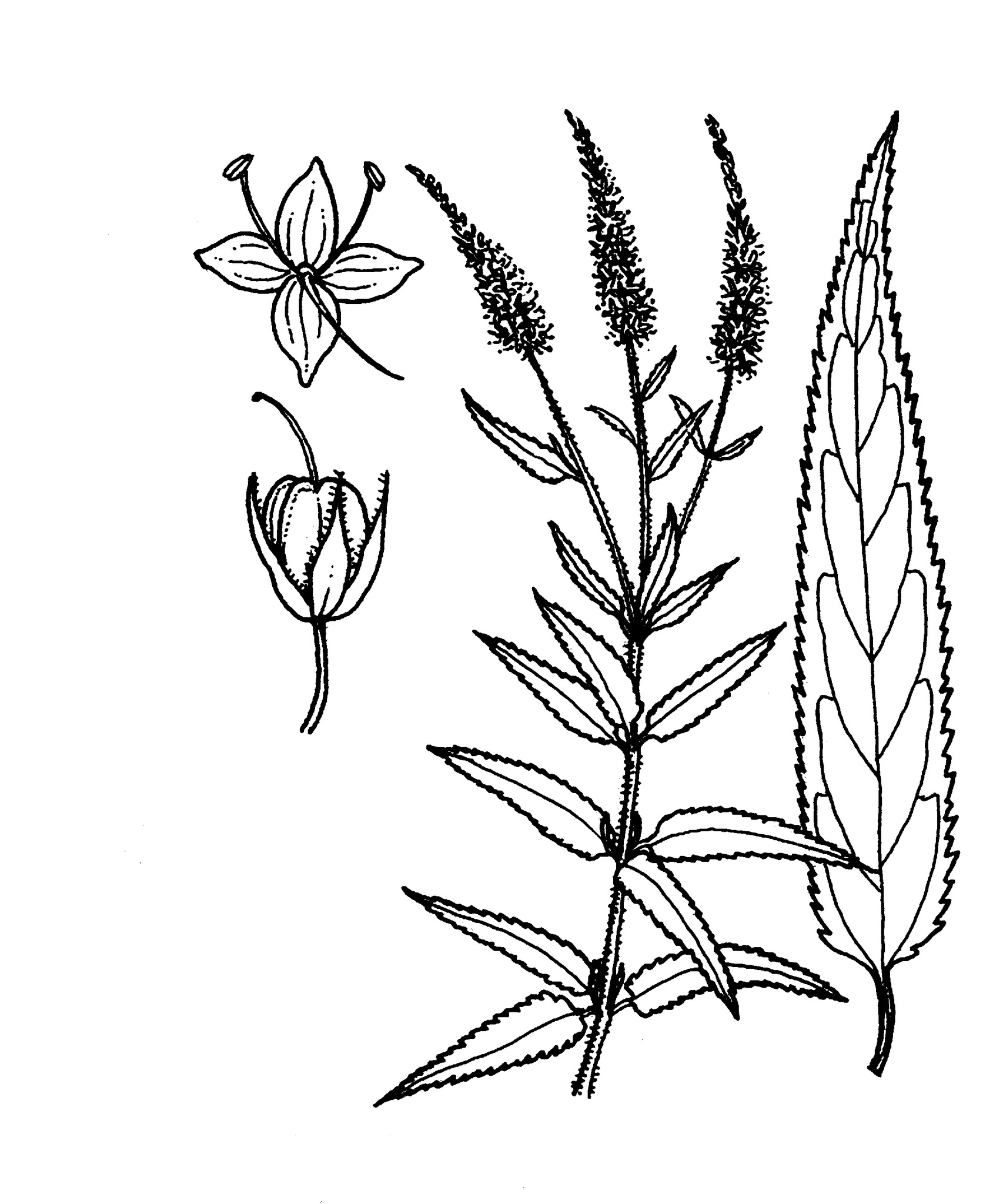
Possibly commemorating St Veronica.
Annual or perennial, prostrate to erect herbs sometimes with a woody rootstock. Leaves opposite, at least on the lower stems, occasionally alternate above or whorled, simple, entire or sometimes toothed. Flower clusters terminal or axillary, rarely solitary. Flowers small, white, pink, purple or blue. Calyx 4- or occasionally 5-parted. Corolla bell-shaped or wheel-like, the 4 lobes longer than the tube. Stamens 2, protruding. Fruit capsule flattened and with a notch.
Mostly cooler-climate plants grown as border plants or as groundcovers for the simple foliage and, often, the clear blue or lavender flowers, the petals of which fall soon after picking, hence the common name.
The range of available species varies from year to year. A key is not provided for this genus and only the more commonly grown species are described in detail. The following species are available from time to time: V. austriaca L. from Europe, generally over 20 cm tall, with deeply divided leaves and bright blue flowers; V. austriaca subsp. teucrium (L.) D.A.Webb. [V. teucrium L.], available as V. 'Royal Blue', a dense bush to 45 cm tall with blue flowers; V. beccabunga L., Brooklime, from Eurasia, a scrambling plant rooting at the nodes with leaves 1-4 cm long and flowers pale to deep blue, sometimes suffused with pink; V. gentianoides Vahl from SW Asia and the Caucasus, an erect plant to 50 cm or more tall with leaves entire or round-toothed, to about 6 cm long and flowers dark blue or pale blue to white with dark blue veins; V. peduncularis Bieb. from Russia and the Caucasus, generally less than 20 cm tall, with deeply divided leaves and flowers white, pink or blue and generally available as V. 'Georgia Blue' ['Oxford Blue']; V. plebeia R. Br., Trailing Speedwell, from WA, SA and eastern Australia, a perennial herb with stolons to 1m long; it flowers from spring to summer and, like V. arvensis L.,Wall Speedwell, and V. hederifolia, Ivy-leaved Speedwell, is a weed in lawns and gardens; V. prostrata L. from Europe, a mat-forming shrub with leaves to 2 cm long with the margins often rolled under, the flowers pale to deep blue, the cultivar, V. 'Mrs Holt' with pale pink flowers; V. reptans DC. from Corsica and Spain, a dense, spreading, mat-forming shrub rooting at the nodes with leaves about 6 mm long, the flowers solitary, white to pink or pale blue [V. repens Loisel]; and V. subsessilis (Miq.) Carr. from Japan, a dense shrub to about 50 cm or so tall with leaves 5-10 cm long, finely toothed, flowers in axillary violet-blue clusters.
Seed, division or semi-hardwood cuttings.
Perennial or annual herbs; leaves mostly opposite; corolla tube shorter than the corolla lobes; stamens 2.
About 250 species from northern temperate regions, especially Europe and W Asia.
Source: (2002). Scrophulariaceae. In: . Horticultural Flora of South-eastern Australia. Volume 4. Flowering plants. Dicotyledons. Part 3. The identification of garden and cultivated plants. University of New South Wales Press.
